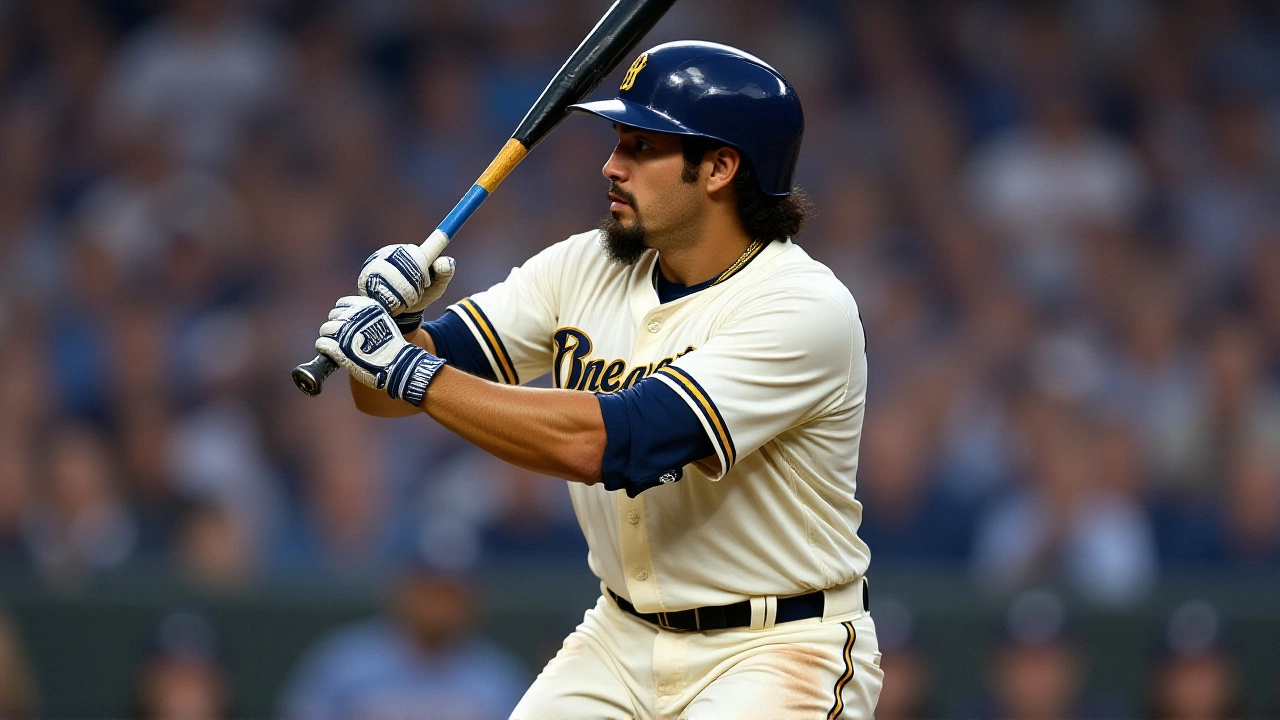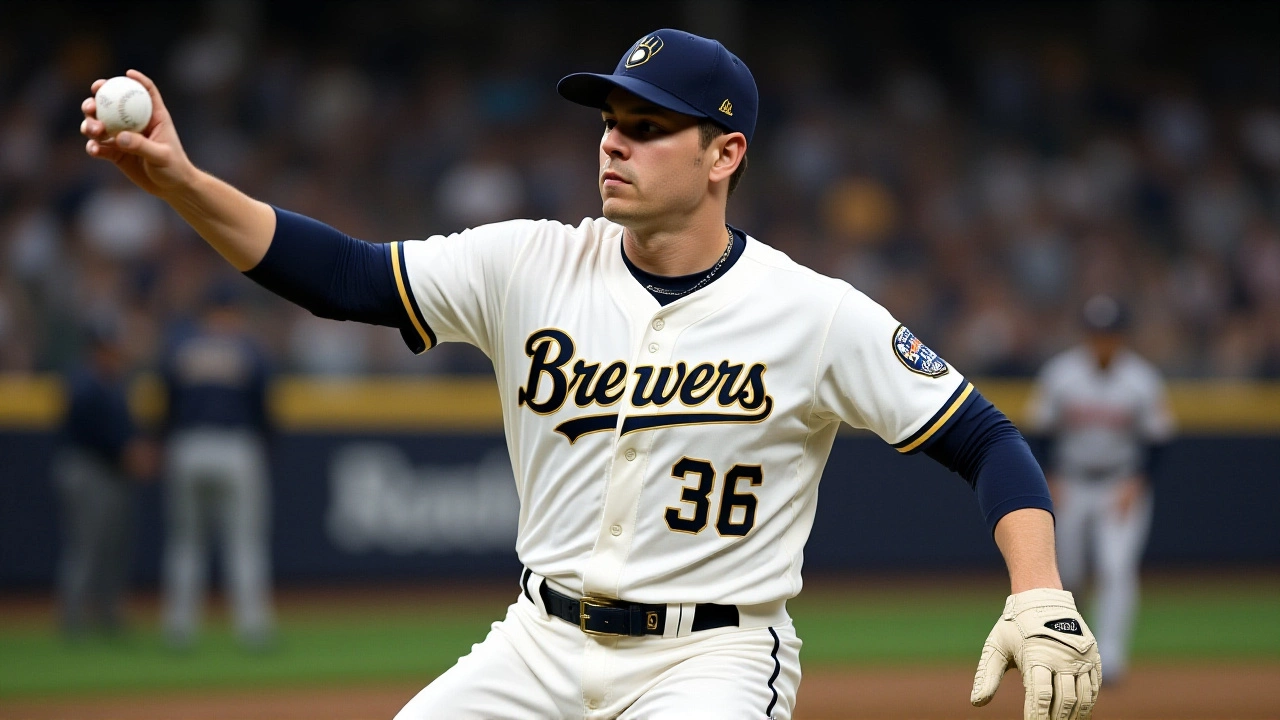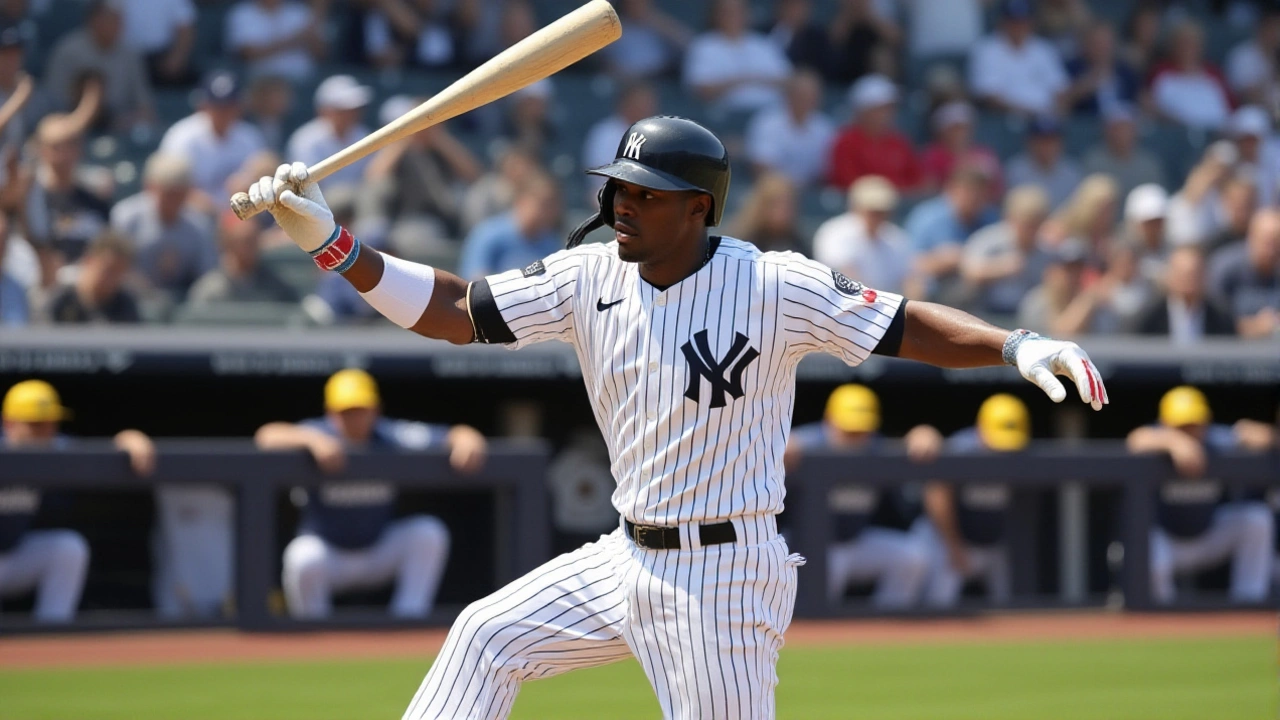When the Milwaukee Brewers tasted defeat at Yankee Stadium in late March 2025, few imagined the torpedo bat controversy would become the catalyst for a surprise National League Championship Series (NLCS) berth.
From March 28‑30, the New York Yankees racked up 15 home runs, tying the MLB record for an opening‑series barrage. Five of those dingers came off the newly‑shaped torpedo bats, a design that baffled the Brewers but soon sparked a rapid adoption that helped turn their season around.
How the Torpedo Bat Got Its Name (and Its Edge)
The story begins with Aaron Leanhardt, a 48‑year‑old field coordinator for the Miami Marlins. Leanhardt holds a B.S. in electrical engineering from the University of Michigan and a Ph.D. in physics from MIT, and he was hired by the Yankees in 2018 after a brief stint coaching in 2017. His thesis on mass redistribution in solid objects gave birth to a bat that keeps the legal dimensions—no more than 2.61 inches in diameter and 42 inches long—but shifts wood mass lower on the barrel, creating a larger sweet spot for hitters who make contact high‑up on the swing.
Technically, the bat complies with the 2025 MLB Rulebook, which still mandates a "one piece of solid wood". What makes the torpedo bat distinct is its internal geometry, not an exterior material change. By moving mass toward the handle‑end, the bat effectively lengthens the zone where the ball meets the barrel, translating into higher exit velocity for certain swing paths.
The Opening Series Shock
During the Yankees’ 20‑9 victory on March 29, the torpedo bat’s power was on full display. Cody Bellinger and Jazz Chisholm Jr. each launched a homer with the new design, prompting headlines that called the tool a "game‑changer". For the Brewers, the experience was humbling. Their starting pitcher, Corbin Burnes, gave up six runs in two innings, and the team’s offense sputtered against a bat that seemed to defy physics.
But the cringe moment turned into an opportunity. The Brewers’ equipment manager, Jason Shawger, went back to the drawing board. He placed orders for customized torpedo bats, hoping a tailored version could give his hitters a new edge.
The First Brewers’ Torpedo Bat: Oliver Dunn’s Squeeze Play
On April 9, 2025, at American Family Field in Milwaukee, third baseman Oliver Dunn stepped up with the league’s first Brewer‑issued torpedo bat. Rather than swing for the fences, Dunn used it to execute a squeeze bunt in the second inning against the Detroit Tigers. The bunt landed safely, delivering the game’s opening run in a 5‑1 victory.
“I wasn’t trying to hit a home run,” Dunn said in a post‑game interview. “I just wanted to see if the bat felt different on a bunt, and it actually helped me get the ball exactly where I needed it.” The move surprised fans and analysts alike, showcasing the bat’s versatility beyond sheer power.
Batting Boosts Across the Lineup
While Dunn’s bunt turned heads, the rest of Milwaukee’s offense found its stride in the same game. Outfielder Christian Yelich snapped an 0‑for‑19 slump with a solo homer—his fourth of the season. First baseman Rhys Hoskins followed with another long ball, and outfielder Sal Frelick recorded his first regular‑season homer since May 2024.
Pitching also clicked. Left‑hander Jose Quintana delivered six solid innings, allowing just one run and providing the stability the Brewers needed while the bats were being fine‑tuned.

Why the Brewers Embraced the Torpedo Bat
Small‑market teams often operate with tighter budgets, but the torpedo bat presented a cost‑effective way to level the playing field. By customizing the mass distribution for each hitter’s swing plane, the Brewers could extract marginal gains without splurging on high‑priced free agents.
Shawger worked closely with bat manufacturers to profile each player’s contact point—Yelich prefers a slightly higher sweet spot, while Hoskins thrives lower. The resulting bats differed subtly in weight placement, yet all stayed within MLB’s legal dimensions. This data‑driven approach mirrors trends in other sports where equipment is tailored to individual athletes.
Reactions Across the League
Not everyone is thrilled. Some traditionalists argue the torpedo bat blurs the line between skill and equipment assistance. Former MLB umpire Joe West warned, “We could be opening a Pandora’s box if teams start engineering every piece of gear.”
Conversely, analytics firms like Baseball‑Insights have published models showing a 3‑5% increase in launch angle for batters using the torpedo design, especially those who naturally swing with a higher barrel path. The league office, as of mid‑April 2025, has not issued a clarifying statement, leaving the debate open.
Impact on the Brewers’ Playoff Push
Fast‑forward to the NLCS. Milwaukee’s unexpected run owes a slice of its success to the torpedo bat’s strategic adoption. In the divisional series, Yelich’s late‑game homer—hit with a customized torpedo bat—proved the difference between a 4‑3 win and elimination. The bat’s larger sweet spot helped him keep the ball in the park even on a marginally off‑timed swing.
“We never imagined a piece of wood would become part of our identity this season,” Shawger reflected after the clinching game. “It’s about adapting, and the torpedo bat gave us that edge when we needed it most.”

What’s Next for Torpedo Bats?
The next few months will likely see a flood of requests. Teams such as the Los Angeles Dodgers have already sent scouting reports to bat manufacturers, and the Texas Rangers hinted at a pilot program during spring training.
MLB may eventually tighten the rulebook, perhaps specifying weight‑distribution limits or mandating a uniform “sweet spot” dimension. Until then, the torpedo bat remains a legal, albeit controversial, tool that could reshape equipment strategy for years to come.
Key Facts
- Opening series (Mar 28‑30 2025) produced 15 Yankees home runs, 5 with torpedo bats.
- First Brewer to use a torpedo bat: Oliver Dunn on Apr 9 2025.
- Brewers advanced to the NLCS, with torpedo‑bat‑enhanced homers in both the divisional and championship series.
- Designer Aaron Leanhardt holds a Ph.D. in physics from MIT and previously worked for the Miami Marlins.
- MLB’s 2025 Rulebook still permits the bat’s dimensions, leaving the controversy largely regulatory.
Frequently Asked Questions
How did the torpedo bat affect the Brewers’ offensive strategy?
By reshaping the bat’s mass, the Brewers could tailor the sweet spot to each hitter’s swing plane. This resulted in higher launch angles for power hitters like Yelich and more controlled contact for situational players such as Dunn, ultimately boosting run production during crucial games.
Is the torpedo bat legal under MLB rules?
Yes. The 2025 MLB Rulebook only limits overall bat dimensions—no more than 2.61 inches in diameter and 42 inches in length—and requires a single piece of solid wood. The torpedo bat complies with those specifications, though it redistributes weight internally, a nuance the league has not yet addressed.
Who originally developed the torpedo bat concept?
The design traces back to Aaron Leanhardt, the Miami Marlins’ field coordinator with a physics doctorate from MIT. He began experimenting in 2017, and the Yankees adopted the prototype after hiring him in 2018.
What are the potential future changes to bat regulations?
Analysts predict MLB may introduce limits on weight distribution or require standardized mass‑center testing. Any amendment would aim to preserve competitive balance while still allowing innovation within defined bounds.
Which other teams are looking into torpedo bats?
Beyond the Brewers, the Los Angeles Dodgers, Texas Rangers, and Chicago Cubs have reportedly requested prototypes. Spring‑training sessions this year have already featured trial runs, indicating a league‑wide ripple effect.



